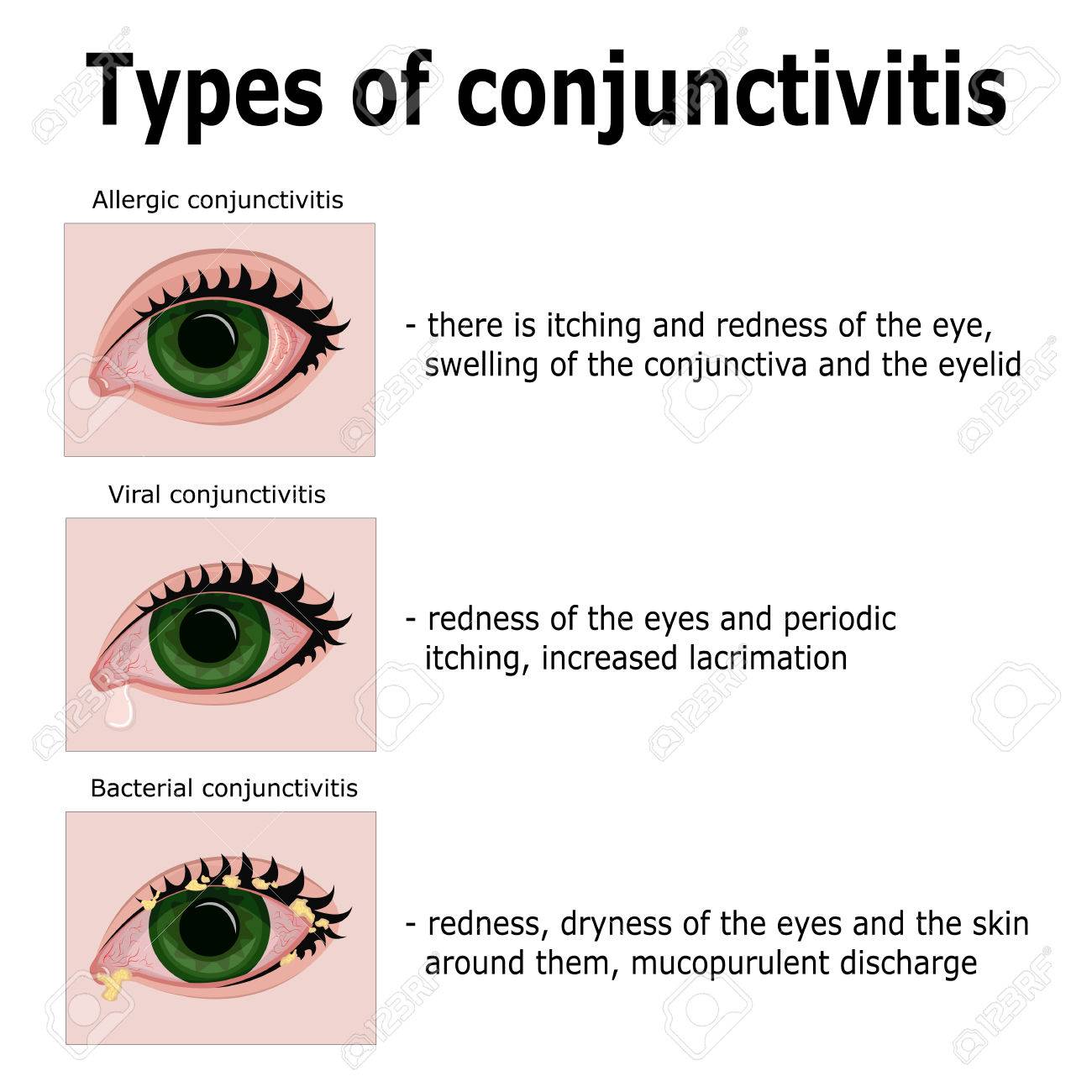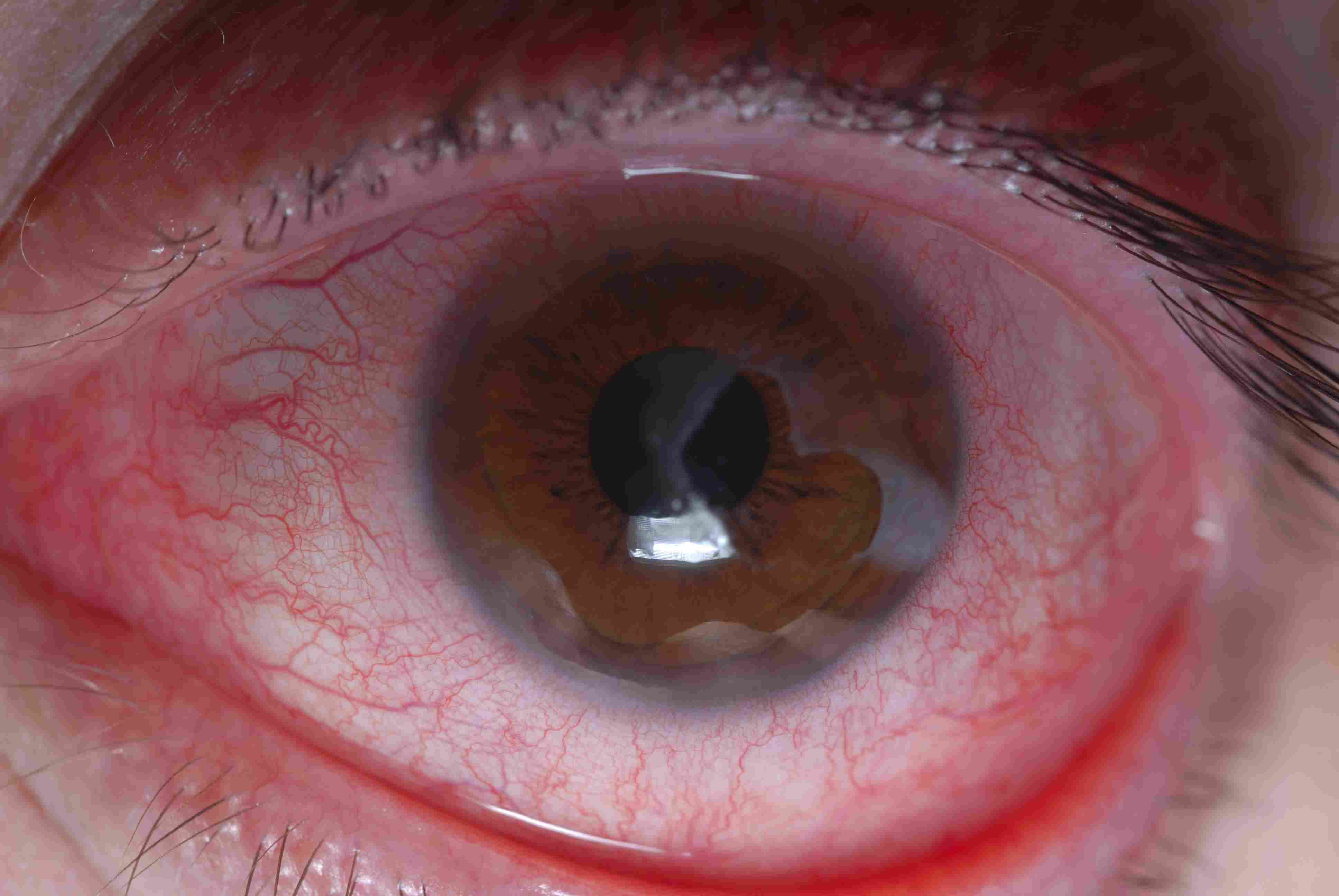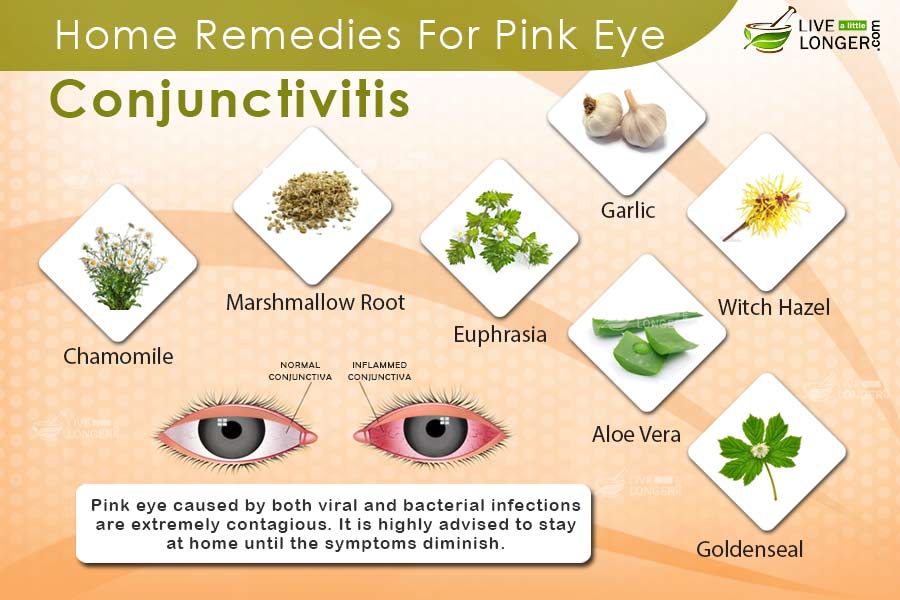Conjunctivitis, commonly known as "pink eye," is an inflammation of the thin, transparent layer of tissue (conjunctiva) that covers the front surface of the eye and lines the inner surface of the eyelids. It can be caused by viruses, bacteria, allergens, or irritants, leading to symptoms like redness, itching, and discharge. Depending on the cause, treatment may involve antiviral or antibiotic medications, antihistamine eye drops, or simple remedies like cold compresses.
Conjunctivitis, commonly known as "pink eye," is an inflammation of the conjunctiva, the thin tissue covering the white part of the eye. It can be caused by various factors, including bacteria, viruses, allergens, irritants, and underlying health conditions. Here's a brief overview of five types of conjunctivitis and their respective treatments:

Viral Conjunctivitis:
- Cause: Viral infections, such as adenoviruses or herpes simplex virus.
- Symptoms: Watery discharge, redness, itching, and light sensitivity.
- Treatment: Usually self-limiting; warm compresses, artificial tears, and antihistamine eye drops can provide relief. In severe cases, antiviral medications may be prescribed.

Bacterial Conjunctivitis:
- Cause: Bacterial infections, often from staphylococcus or streptococcus bacteria.
- Symptoms: Thick, yellow-green discharge, redness, and discomfort.

Allergic Conjunctivitis:
- Cause: Allergens like pollen, pet dander, or dust mites trigger an immune response.
- Symptoms: Itching, redness, excessive tearing, and swelling.
- Treatment: Avoidance of allergens is crucial. Over-the-counter or prescription antihistamine eye drops, cold compresses, and oral antihistamines can manage symptoms.

Giant Papillary Conjunctivitis (GPC):
- Cause: Often associated with contact lens wear, eye surgery, or foreign body irritation.
- Symptoms: Itching, excessive mucous discharge, blurred vision, and discomfort.
- Treatment: Temporarily discontinuing contact lens use, frequent lens replacement, prescription eye drops, and managing underlying causes.

Chemical Conjunctivitis:
- Cause: Exposure to irritating substances like chlorine, smoke, or industrial chemicals.
- Symptoms: Redness, pain, watering, and blurred vision.
- Treatment: Immediate flushing with clean water, saline solution, or an eye wash. Medical evaluation may be necessary if symptoms persist.
For all types of conjunctivitis, practicing good hygiene, avoiding touching the eyes, and not sharing personal items like towels or makeup can prevent its spread. If symptoms worsen or persist, seeking prompt medical attention is essential. Proper diagnosis by a healthcare professional ensures the appropriate treatment approach for a swift recovery and preventing potential complications.
While natural remedies for conjunctivitis (pink eye) can provide relief from symptoms, it's important to note that they are not a substitute for medical treatment, especially in cases of bacterial or viral conjunctivitis. Consult a healthcare professional before using any natural remedies, especially if you're unsure about the cause of your conjunctivitis.
Here are some natural remedies that may help alleviate the discomfort associated with conjunctivitis:

Warm Compresses: Applying a warm, damp cloth over your closed eyelids can help soothe irritation and reduce crusting. Make sure the cloth is clean and avoid sharing it to prevent spreading the infection.
Cold Compresses: If you have allergic conjunctivitis, a cold compress can help reduce itching and inflammation. Use a clean, cold cloth or a chilled gel eye mask.
Cucumber Slices: Chilled cucumber slices placed on closed eyelids can provide a cooling effect and reduce puffiness and redness.
Chamomile Tea Bags: Cool, moist chamomile tea bags (make sure they're caffeine-free) placed over closed eyes can have anti-inflammatory properties and help relieve irritation.
Saline Solution: Gently rinsing your eyes with a homemade saline solution (a mixture of distilled water and salt) can help cleanse the eyes and remove discharge. Do not use tap water as it may contain impurities.
Honey: Some studies suggest that honey, specifically Hanuka honey, has antibacterial properties. However, it's important to exercise caution when using honey near the eyes and consult a healthcare professional before trying this remedy.
Aloe Vera Gel: Aloe Vera has soothing and anti-inflammatory properties. Use a clean finger to apply a small amount of pure Aloe Vera gel around the eyes, avoiding direct contact with the eyes.
Coconut Oil: Organic, virgin coconut oil may help moisturize the area around the eyes and reduce discomfort. Apply a small amount to the skin, avoiding contact with the eyes.
Remember, these natural remedies are intended to provide temporary relief from symptoms and should not replace professional medical advice. If your conjunctivitis is severe, persists, or is accompanied by vision changes, pain, or other concerning symptoms, seek medical attention promptly. Proper diagnosis and treatment are essential to ensure a full recovery and prevent potential complications.
Excellent efforts, great article!
ReplyDelete